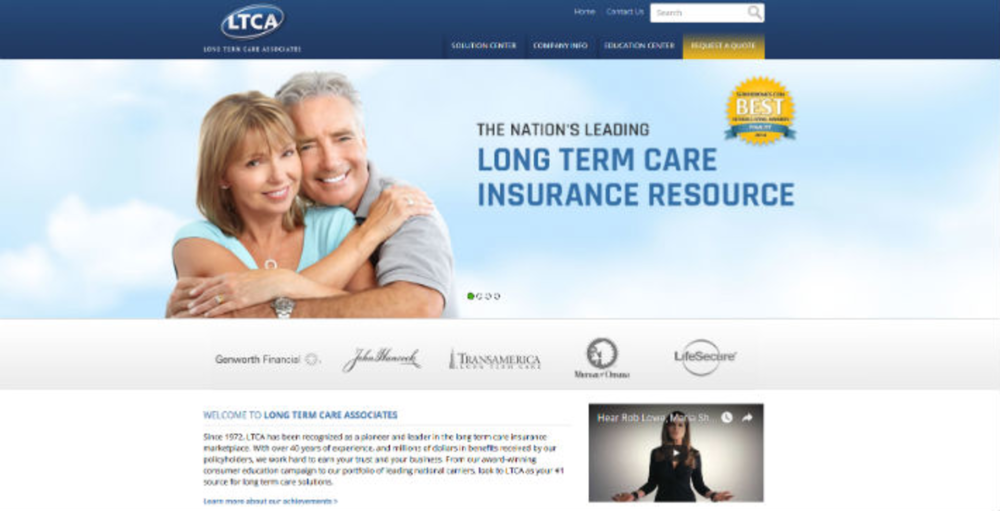Marketing shouldn’t be an either-or industry. It’s not about deciding between either direct mail or digital, or either conventional or new-age methods. Marketers need to leverage each channel’s strengths and combine them to create a multichannel mix that packs a powerful punch from every angle.
Long Term Care Associates (LTCA), a national marketing organization for extended-care insurance providers, learned the benefits of fusing traditional tactics with modern technology when it implemented a new solution to make its direct mail lead-distribution process more efficient.
Switching between the old and the new
Before the Internet, LTCA, like many organizations, relied on direct mail to promote its products. The company worked with affinity groups like alumni associations or professional clubs to send their members information about extended care, as well as a quote and a reply card. To turn these prospects into a lead, LTCA’s employees would then have to manually enter the data acquired from these cards into the company’s database—a process Gary Forman, SVP and cofounder of the organization, describes as time and labor intensive.
Then about 10 years ago LTCA shifted a lot of its marketing efforts online and began targeting prospects via email and pay-per-click ads. The company invested in technology, including Web-to-lead forms and Salesforce’s CRM platform, and created a more integrated lead-distribution system.
But over time, Forman realized that the digital space was becoming more crowded, and he decided to revisit direct mail. Still, he wanted to find a way to bring the efficiency of online marketing to the offline world. After all, LTCA can receive tens to hundreds of direct mail response cards a day, Forman notes, and he didn’t want to have to hire more people to manually enter this data into its systems.
“As we saw things opening back up in direct mail, all of a sudden the light went on,” Forman says, “We need to marry these two.”
So about a year and a half ago LTCA implemented cloud data management platform Captricity to transform handwritten information into digital data and speed up the lead-distribution process.
Combining the best of both worlds
Here’s how Captricity works: Through the platform, LTCA can make an online template that matches the fields on its direct mail response cards. If a response card asks customers for their name, phone number, email address, and ZIP Code, for instance, LTCA can create a template that contains these corresponding fields. Each of these digital fields then has a matching database field. So when LTCA receives a reply card, it can scan the card into the Captricity platform, turn the handwritten data into digital data, and immediately transport that data into its Salesforce CRM system. To ensure that the data being uploaded into the platform is accurate, Captricity supplements its technology with human review. Once the data is in the CRM system, LTCA can use that data to build mailing lists or share the information with its sales agents to have them follow up with a lead.
Reaching the right markets
Still, Forman recognizes that direct mail can be expensive. So, he relies on segmentation to ensure that his campaigns reach the people who are most likely to buy extended-care insurance. For example, the average age of a long-term care buyer is 58, he says; therefore, the company primarily sends direct mail pieces to people who are close to this age. When it comes to email marketing, however, the company can afford to send digital communications to people who fall within a broader age range.
“I think that’s just being good stewards [of] the marketing budget, trying not to overextend ourselves, and sort of operate within the space that we know that we can be successful,” Forman says.
Generating results
Today, LTCA generates about 25% of its leads through direct mail, and the company has reduced the amount of time it spends on manual data entry for its direct mail program by 80%. Forman believes that the speed at which the company processes this information has helped it earn a return on its investment.
“Anything that shortens that time frame for us is gold,” he says. “It just gives the client less time to go somewhere else to get the information or inform themselves and become unsold or just become uninterested.”
Still, he knows that one channel cannot do it all and continues to rely on a combination of direct mail, email, and pay-per-click marketing to drive ROI.
“For us, it’s always been a balance of trying to operate at the sweetest spot in each of those markets and keep the ROI good in all of them,” he says. “You can’t just really shift to only one market because, at some point, you lose the sweet spot and it becomes a little less receptive.”








